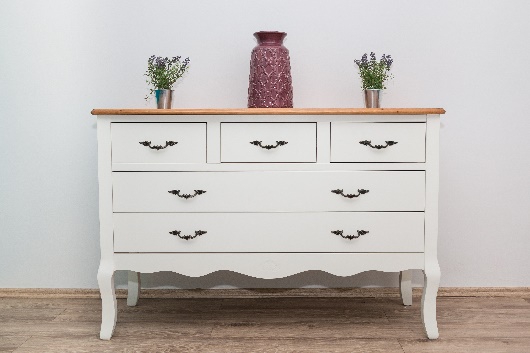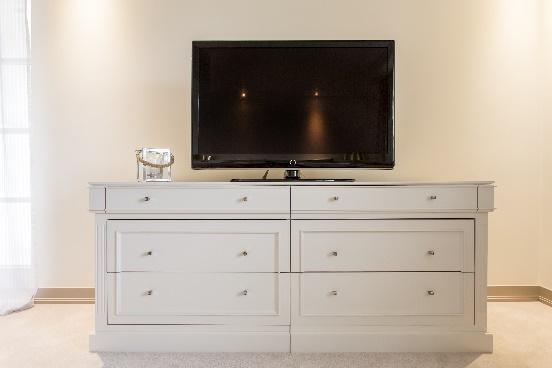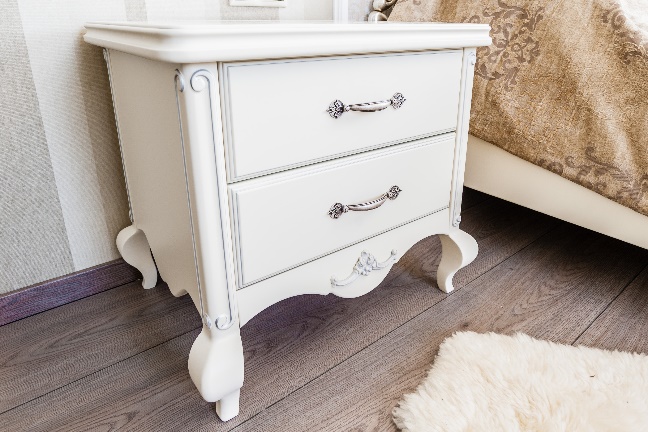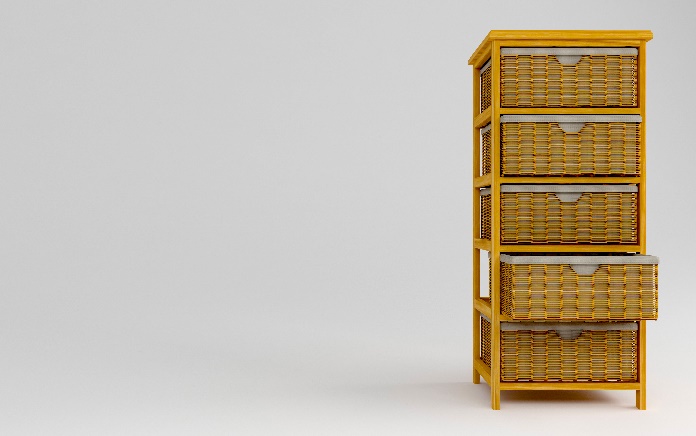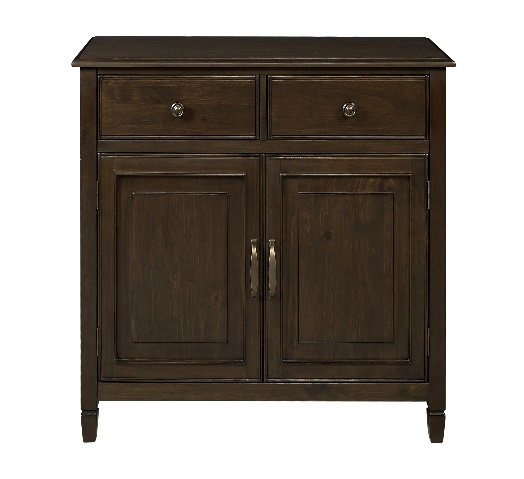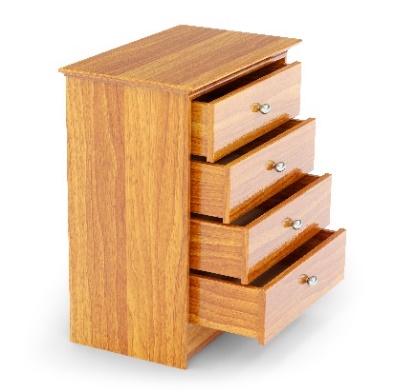CPSC Furniture Tip Over Focus Groups
Focus Groups
CPSC Furniture Tipover Focus Groups OMB Package - Focus Group Guide - FINAL 23SEP2019
CPSC Furniture Tip Over Focus Groups
OMB: 3041-0136
CPSC Furniture Usage:
Focus Group Discussion Guide
Research Objective: Conduct focus groups with adults to discuss their perceptions of clothing storage units and associated warning information, as well as the factors influencing their decisions on product selection and use. Results of these focus groups will help inform CPSC on ways to improve voluntary standards in the future.
NOTES TO REVIEWER: |
This discussion guide is not a script and therefore will not be read verbatim. The moderator will use these questions as a roadmap and probe as needed to maintain the natural flow of conversation. |
Moderator instructions are highlighted in yellow. |
Session Overview: Total time—90 minutes
SECTION A: Introduction and Icebreaker (5 min.) The moderator will explain the purpose of the research, present the ground rules, and allow participants to ask any questions. |
SECTION B: Perceptions Associated with Clothing Storage Units (50 min.) This section will assess participant perceptions of what classifies as a clothing storage unit, what factors influence this classification, as well as associated risks with this type of furniture. A worksheet activity will facilitate this discussion by asking participants to label certain products, to share what they would store in them, and to share where they would place them in their homes. The moderator will also probe on additional information that may affect the participants’ decisions to buy a product. |
SECTION C: Awareness and Behaviors Associated with Clothing Storage Unit Warning Labels (30 min.) The next section will assess participant perceptions of and behaviors related to clothing warning unit labels. Participants will be asked to view a sample warning label to examine their comprehension of warning label content and perception of warning label effectiveness. |
SECTION D: Conclusion (5 min.) Moderator ensures that all questions are answered, and all comments have been heard. |
Section A. Introduction and Icebreaker (5 minutes)
Thank you all for coming to talk to us today, your time is greatly appreciated. My name is _____, and I work for Fors Marsh Group, which is an independent research company. This means that I’m here to listen to you and what you have to tell me, and I have no stake in how you respond. Today, we would like to hear from you about some of the factors that influence your decisions when purchasing and arranging furniture.
We will have about 90 minutes for our discussion. Before we get started, I want to go over a few general rules for our discussion today:
First, there are no wrong answers and we are not here to evaluate or judge each other. Our whole purpose is to hear your perspectives, opinions, and experiences.
What we talk about here is confidential. That means that none of your personal identifiable information such as your name or your address, will be associated with anything you say in our reports and your responses will not be linked to your identity in any way.
Likewise, we want to respect everyone’s privacy in this room and not share any of our discussion from today with others who were not here.
Your participation is voluntary and you have the right to withdraw from the study at any time.
You don’t have to answer every question, but I do want to hear from everyone, so I might call on you at some point. Please speak one at a time and clearly so I may hear you.
You might have already noticed the glass behind me. There are some people from the research team who are observing and taking notes so I can be present in our discussion. Even though people are observing, please speak openly about your opinions and experiences. We want to learn from you, so it is important that you share your honest opinions.
We are also video and audio-recording this session. I will be speaking with a lot of people for this project, and it will be impossible for me to remember everything that is said in these groups. The audio files will be transcribed, but any information that could identify you will be removed from the transcripts. At the end of our discussion, I have to write a report and will refer to the recordings and transcripts when writing the report.
Please turn your cellphone off or switch to silent mode.
If you need to go to the restroom during the discussion, please feel free to do so.
Does anyone have any questions before we begin?
[Introductions and Icebreaker]
Okay, great. First, I’m going to have everyone introduce themselves so I can get to know you a little better. Please tell us your first name and your favorite room in your home.
It’s wonderful to meet you all—let’s get started with our discussion.
Section B. Perceptions Associated with Clothing Storage Units (50 min)
[Subsection B1. Brainstorming Activity: Clothing Storage]
So to start off our discussion, I’d like to do a brainstorming activity with you using this flip chart. I would like to hear from you about where you and your family typically store clothes in your home. What are some places or areas that come to mind? We are going make to make a list as a group, so feel free to share as many ideas as you can think of. I will write down your responses and then we can talk about them.
[Participants list the items and moderator writes on chart. Allow brainstorming for 2 minutes or until group has exhausted options. Moderator then focuses on selection of items and uses prompts as needed to fully understand idea.]
Great, thank you! Now let’s talk about the items and/or places that you’ve noted you and your family use to store your clothes.
What makes you store your clothes in [X]?
What items other than clothing would you store in [X]?
Great, thank you for starting the conversation off. This is going to set up the rest of our discussion today about clothing storage units.
[Subsection B2. Definition of Clothing Storage Unit]
Ok, so I would now like to ask you all a question. How would you define what a clothing storage unit is? As a reminder, there are no wrong answers here. We’re just looking for feedback on this topic.
What are some features that would lead you to think that a piece of furniture is a clothing storage unit? [Or, what would make something NOT classified as a clothing storage unit?]
How does X feature influence your decision in determining whether an item is a clothing storage unit? [Probe for each feature mentioned]
[If needed: what do they typically look like? How large are they (height, depth or width in inches? Where are they located in your home?]
[Homeowner group:] How, if at all, does owning your home impact where you place these units in your home?
[Renter group:] How, if at all, does renting your home impact where you place these units in your home?
How does the size of a piece of furniture impact whether or not you would store clothing in it? [Probe to understand if there is a specific size that would make them more or less likely to store clothes in it, e.g., if something is smaller are they less likely?]
What about number of drawers? To what extent does the number of drawers impact your decision to store clothing? [Probe to understand how the number of drawers influences their decision to store clothing in the piece of furniture or not]
How does the size of the drawers impact your decision? [Probe to understand if depth, width, etc. impact their likelihood of storing clothes]
What specific factors influence your decision on what items to put inside pieces of furniture?
When do you make the decision of what to put inside a piece of furniture?
[If needed for clarification] Before you buy it? After you have already put it in your home?
[Children living in home]: To what extent do your children interact with clothing storage units?
How do they interact with them? [Probe for sitting, functional climbing (e.g., stepping on the bottom drawer to reach things or using the piece of furniture to pull themselves up), playing on them]
[Children visiting home]: When children come visit or stay at your house, to what extent do they interact with clothing storage units?
How do they interact with them? [Probe for sitting, functional climbing (e.g., stepping on the bottom drawer to reach things or using the piece of furniture to pull themselves up), playing on them]
[Subsection B3. Marketing of Product]
Switching gears a little bit, I’d like you to think about clothing storage units you have bought and/or seen displayed for sale in a store.
What does the setting or display look like for that item typically in advertisements or in the store?
How do these displays influence where you place the product in your home?
How do these displays influence how you use the product in your home?
[Probe to understand if they mimic placement/use based on what they see]
What about catalogues or other advertisements? How do depictions of furniture in these ads influence where you place the furniture or how you use it? [Probe to understand if they mimic placement/use based on what they see]
To what extent does a manufacturer’s name of the product (e.g. nightstand or dresser) impact where you place the product in your home? What about how you use the product in your home? [Probe to understand if the manufacturer’s name of the product (e.g. nightstand) is how they use it in home. Why or why not?]
To what extent does the name influence whether you classify a product as a clothing storage unit?
[Subsection B4. Behaviors related to purchasing and safety]
Who in your household usually makes the decision when it comes to purchasing a clothing storage unit?
When you are looking to purchase a clothing storage unit, what factors are considered before purchasing?
What hazards or risks are you aware of that are associated with clothing storage units?
How do you take these into consideration when deciding whether or not to purchase a piece of furniture?
What about when deciding where to place the product in your house? How do hazards and risks impact your decision?
[If tipover does not come up] As you may or may not be aware, some of these units can potentially tip over if not secured. How, if at all, does or would tipover risk influence your decision to purchase?
What about your decision where to place the item?
Have you ever experienced a piece of furniture, whether it’s a clothing storage unit or not, tilting or tipping over in your home?
Did you report it to the CPSC? The manufacturer? If not, for what reasons?
[IMPORTANT QUESTION] How would additional information about stability (for example, a certification or verification that a product meets a certain safety standard) have an effect on your buying decision? [Probe to understand if having this type of information available would have an effect on whether they would purchase it.]
What types of things do you typically put on top of these products?
How big are they? [General sense of height, weight]
What factors do you take into consideration when you decide whether or not to put something on top of one of these products?
What size or weight limits do you take into consideration, if at all?
Are TVs ever included in items that you might put on top?
[If yes] What type of TV is it? (e.g. CRT or flat screen)
How big is the TV?
Is the TV on a stand or on the piece of furniture leaning against the wall?
Great, thank you for that discussion. You all have provided very helpful feedback so far.
[Subsection B5. Worksheet Activity]
We are now going to do a worksheet activity. Once I pass you this worksheet, you will see that there is a grid showing a bunch of different pieces of furniture. Please note that it has a front and back. What I would like you to do is look at these pieces of furniture, and in the first column, write what you would call this piece of furniture. In the second column, write what you would store in that piece of furniture. In the third, please write where you would potentially put that piece of furniture in your home. For example, what room would you put it in? When you are done, we will discuss your answers. Alright, it looks like everyone is wrapping up. Before we discuss, I’d like you to go through and put a little x next to the items you think are clothing storage units.
Okay, now let’s talk through how you filled this out.
Looking at the first piece of furniture listed, what would you call this piece of furniture?
What would you store in it?
For what reasons would you put [X] in it?
Where would you place it in your home?
For what reasons would you put it in [X] location?
Did anyone classify this as a clothing storage unit? What factors led you to do so?
For those who didn’t, for what reasons did you not classify this as a clothing storage unit?
[Repeat for each item]
Are there any items on this worksheet that you didn’t mark as a clothing storage unit but you still might put clothing in?
If so, what are they? For what reasons? [Probe to understand if size, number of drawers, material, etc. impact decision].
What clothing storage units listed on this worksheet do you prefer over the others? [If participant answers in terms of how the item looks (e.g. color or how chic it is), probe to understand what specific features (e.g. size, height, number of drawers) about the preferred CSU makes the participant prefer this CSU over another CSU. Want to understand function.]
For what reasons?
[Glass cabinet]: How does the glass on this item influence your decision whether it’s a clothing storage unit or not? Would wood doors or frosted glass change your mind?
[Dark brown cabinet under glass: Ensure discussion touches on CSU versus accent piece and reasons for this classification].
Looking at the pieces of furniture on this worksheet, which products would a child be most likely to interact with in your home?
What does that interaction look like [or what could it look like]?
For the products you didn’t mention a child would interact with, for what reasons would they not?
Great, thank you for that discussion.
Section C. Awareness and Behaviors Associated with Clothing Storage Unit Warning Labels (30 minutes)
Now I would like to shift topics a little bit to talk more specifically about warning labels that you might see on clothing storage units.
How often do you notice warning labels on clothing storage units?
Where on that piece of furniture did you find the warning label?
What is typically on the warning labels that you’ve seen on clothing storage units? Is the purpose of the warning label clear? [If unclear, probe to understand what isn’t clear on the warning label.]
Which placement of the warning label did you find to be the most eye-catching location on the clothing storage unit? [Probe to understand what specific location (e.g., bottom of drawer, side of drawer, upper/lower drawer, on the door) on a clothing storage unit was most eye catching.]
How often have you seen labels that you thought were in an unacceptable place?
[If yes], For what reasons did you think that was an unacceptable place to have a warning label on a clothing storage unit?
Ok, now I’m going to pass around another piece of paper. You’ll see that there is an example of a warning label that might be seen on a clothing storage unit, I’d like you to take a minute to look at and read over the warning label.
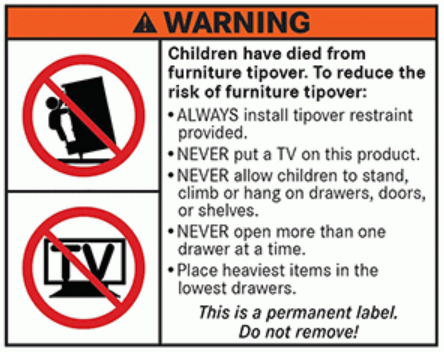
What is your first reaction when you see a label like this?
How much attention do you typically pay to warning labels like this?
How much of the warning label do you typically read, if at all? [Probe to understand if participant reads the entire label]
What do you think is the intent of the warning label? How easy or difficult is the warning label to understand?
What, if anything, is confusing or unclear about this label?
What catches your attention at first about this label?
To what extent does the opening line, “Children have died from furniture tipover” catch your attention? [Probe to understand why]
How does that line impact your decision to comply with the warning label?
Looking at the line that says “always install tipover restraint provided,” can you tell me what that means in your own words?
What steps have you previously taken, if any, to anchor or restrain clothing storage units? What made you decide to/not to?
How often do you think consumers read this warning label and follow the instructions to not put a TV on the product? What makes you say that?
What type of additional information about TVs would be beneficial to add to the warning label, if at all? [Probe to see if adding what type of TV (e.g., CRT or flat screen) would be helpful or not.]
The next line of the warning label reads, “NEVER allow children to stand, climb or hang on drawers, doors, or shelves.”
What do you believe the purpose of this line is?
To what extent do you follow these instructions within your home? [Probe to understand why or not why]
If you haven’t seen this line before, how would reading it impact your behavior? [Probe to understand if they would comply with the instructions]
The next line says to “NEVER open more than one drawer at a time.”
What do you believe is the purpose of this line?
To what extent do you avoid opening more than one drawer at a time?
The last bullet notes that you should place the heaviest items in the lowest drawers.
What do you believe the purpose of this line is?
Is this something that you currently do within your home? Why or why not?
In addition to a permanent warning label, there is potential that a hang tag or removeable sticker providing additional risk information could be added to products like these in the future.
What type of additional information would be useful for you to have on the additional warning tag or sticker, if any?
What formatting changes would you like to see on the hang tag or removable sticker compared to the permanent warning label? [Probe to understand if more graphics, less verbiage, a different color scheme, or size of warning label would help make the consumer more likely to read the label]
Would you rather this information be presented in a hang tag or as a removable sticker? For example, a hang tag could be a tag hanging off the back of a dresser, and a removable sticker could be a sticker placed at the bottom of a drawer.
The bottom line of the warning label says, “This is a permanent label. Do not remove!” Thinking about clothing storage units in your home, do you typically leave the warning labels or remove them? Does this behavior vary by type of furniture? [Probe to understand if only take off of clothing storage units, only other items, etc.]
How effective do you think this warning label would be in preventing furniture tipover?
What do you think would make it more effective?
Thank you! That was all very helpful information.
Section D. Conclusion (5 min.)
This has been a very helpful session. Thank you so much for taking time out of your day to be with me and share your perspectives and experiences. Before we wrap up, is there anything else that you would like to share or that we might have missed?
[TIME PERMITTING] If you don’t mind, I am going to step out for just a moment to see if my team has any additional follow up questions for you all. [Ask any additional questions.]
Ok, thank you again for your time. Are there any final questions? If not, you are free to go. Please leave behind your worksheets and writing utensils. Have a wonderful evening!
Focus Group Worksheet
|
Product label: |
What would you store in this piece of furniture? |
Where would you put this piece of furniture in your home? |
62” W x 20” D x 36” H |
|
|
|
19” W x 15” D x 25” H |
|
|
|
52” W x 16” D x 35” H |
|
|
|
32” W x 16” D x 30” H |
|
|
|
17.75” W x 12” D x 35” H |
|
|
|
58.2” W x 21” D x 82” H |
|
|
|
34” W x 12” D x 33.25” H |
|
|
|
26” W x 20” D x 30” H |
|
|
|
| File Type | application/msword |
| File Title | OMB package - Tipover |
| Author | 558022 |
| Last Modified By | SYSTEM |
| File Modified | 2019-10-07 |
| File Created | 2019-10-07 |
© 2025 OMB.report | Privacy Policy
